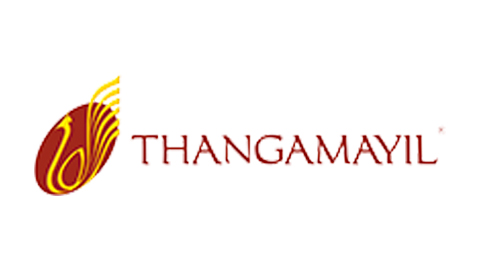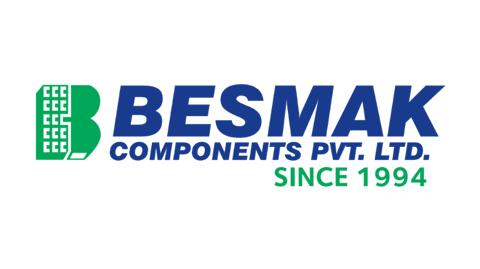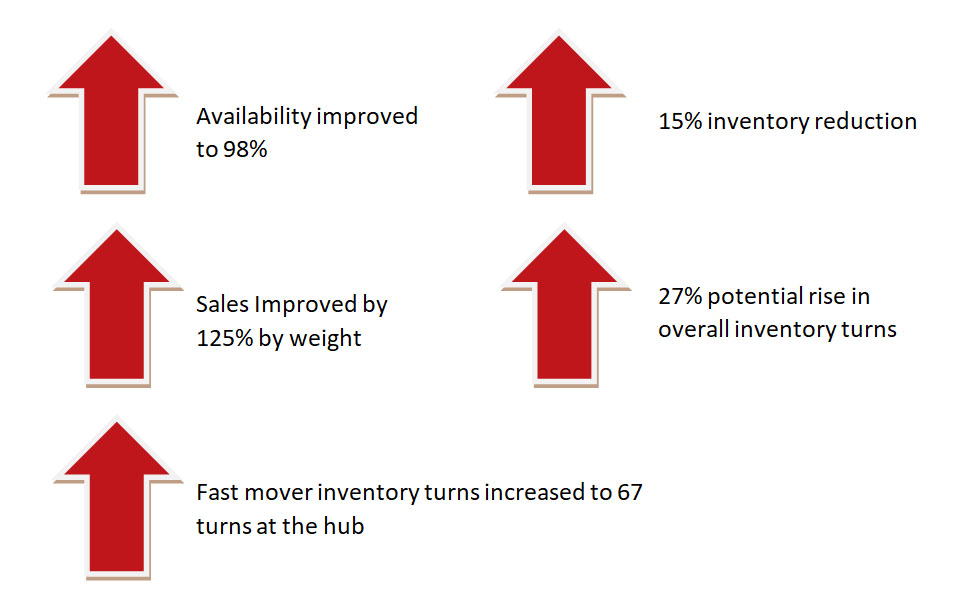










Nelcast is the largest Jobbing Foundry in India for the manufacturing of Ductile & Grey Iron Castings, catering to the Global Automotive, Tractor, Construction, Mining, Railways and General Engineering sectors within and outside India.
Nelcast was facing serious challenges to supply its products within the agreed delivery times to customers, their On Time in Full (OTIF) were less than 60%; the delivery problem became more severe during the recent auto industry boom to the extent that the customers started identifying alternate sources of supply due to delayed deliveries. Coupled with low delivery performance, Nelcast used to carry high levels of WIP & FG inventory (about 3.5 months). Piles of inventory between production stages used to conceal the available WIP leading to confusion and high stress levels within the execution team. Nelcast approached Strategy & Systems (S&S) to streamline their operations to ensure higher delivery adherence to customers and to simultaneously reduce inventory. After analysing the current processes, demand pattern and past performances, S&S proposed a Theory of Constraints (TOC) guided processes that are based on the principles of pull based replenishment coupled with a unique material traceability and handling methods to enable inventory traceability. SKU's (Stock Keeping Units) were classified as Runners, Repeaters & Strangers based on the demand pattern and unique processes were evolved for replenishment. S&S conducted anin-depth TOC workshop to educate and train the top management team on TOC principles and solutions. Subsequently an empowered in company TOC implementation team was formed to implement TOC guided replenishment processes in their main factory.Clear processes for identifying and storing work in process were laid down, new material handling and storage devises were designed, fabricated and installed within few weeks. A 5 colour coded priority mechanism was implemented that indicates the relative priority of work in process & at FG warehouse such that the work stations can appropriately select and process the inventory in the shop floor. A strategic finished goods buffer was located at the FG warehouse to deal with instant customer deliveries and the plant refills the strategic buffer (based on actual consumption) through a tightly coupled replenishment process. The newly implemented TOC processes covered the sub-contractors and external machine shops and the entire value chain were operating in alignment with actual customer consumption - for every pull by the customer, the value chain reacts to refill the strategic FG buffer. Work stations were designed to pick the work based on the colour priority mechanism.
Within few months of adhering to the TOC guided processes, the delivery performance improved to 85%~92%, reduced manufacturing lead times by 50%, while considerably reducing the WIP inventory (down by 50%) andeasing the stress levels in production execution. Piles of inventory in the shop floor vanished within few weeks after implementing the new processes, leading to a comprehensive visibility of work in process and bottlenecks that were blocking the flow of goods. Nelcast firmly believes when demand cycle picks up again, TOC processes would help them to realize a competitive advantage with their customers which in turn would secure a considerable market share (due to timely deliveries) and realize high throughput efficiencies in their factories.
Malabar Gold & Diamond (MGD) is a market leader with a retail footprint of 275 stores across 10 countries. With a vision to become a world leader in the jewellery industry, MGD has aggressive expansion plans, of tripling its current retail footprint in the next 5 years across its Indian and International operations - an Increase from current 275 stores to 750+ stores.
MGD India operations comprise of a complex network of 105 Stores, 8 factories, 9 Regional SCM Centers, 4000 + vendor base spread across India and a design bank of 1 Lakh+ design variants. MGD also realizes that supply chain efficiency will be a key driver of this growth and improving its efficiency will the first step to realize it vision and transform itself into a “GREAT” company.
MGD partnered with Strategy & Systems (S&S), a fast growing consulting company,to create the next generation supply chain and retail processes.
Given the fast-changing lifestyle, fashion trends and evolving customer needs, jewellery supply chain processes should be robust and nimble enough to adopt to these changes. It is vital to consider the following dimensions before embarking into a rudimentary change in the supply chain process:
S&S adopted a holistic approach to redesign and develop a best in class supply chain processes that are based on Theory of Constraints (TOC) principles and driven by smart data analytics. Such large scale supply chain improvements must be supported by:
S&S evolved a suitable approach to fulfill the above requirements to smoothly transition from the existing supply chain processes at MGD.
S&S conducted a comprehensive analysis to evolve the next generation processes that are based on TOC principles. S&S conducted a comprehensive training workshop to gain the consensus from all stakeholders on the new processes and working rules. Comprehensive training were conducted to all stake holders from retail, Supply Chain, factory, merchandising and vendor base to gain a wholesome consensus.
The overall supply chain solution direction included the following elements:
MGD formed a core management team for implementing the recommended processes with the guidance of S&S consultants; the implementation is being phased into multiple pilots across multiple regions for quick time to results and learnings
Tangible and positive improvements were achieved within 4 to 5 months of implementation at select pilot regions.



TOC was an eye opener as it challenged our basic understanding and approach in meeting the requirements of our Aftermarket business. TOC concepts and processes were very simple, easy to understand and quick to implement...

We spent almost 3 years to strengthen all our basics of retailing. We used to compare the industry parameters with our results. Most of the times we do better based on position of the brand. However, the sales numbers and the overall business results are not encouraging for the investors. This is the time we thought we should do something different to propel the sales and hence the business results.


Our consultants have handheld our core team to learn and imbibe the principles, and have played a key role in mentoring our core team to apply the principles effectively across our company…


Mr. Alan Baretto, CEO of Nilpeter India says "A good grounding in TOC concepts coupled with the Flow software and MIS, gives us the tools to stay lean and achieve our stated goals."... Read more


I strongly recommend to use TOC solution, even though some one feels their supply chain is optimum, as TOC not only optimise but it is a great tool to set up the right culture in an organisation Read more